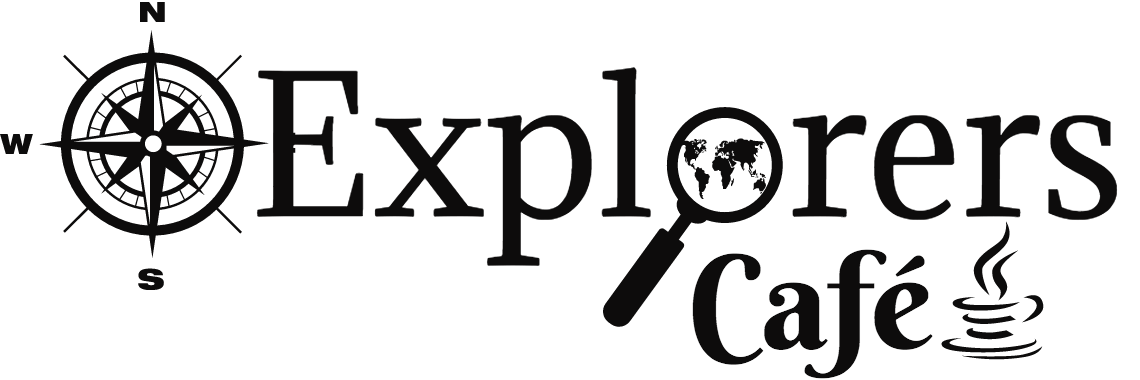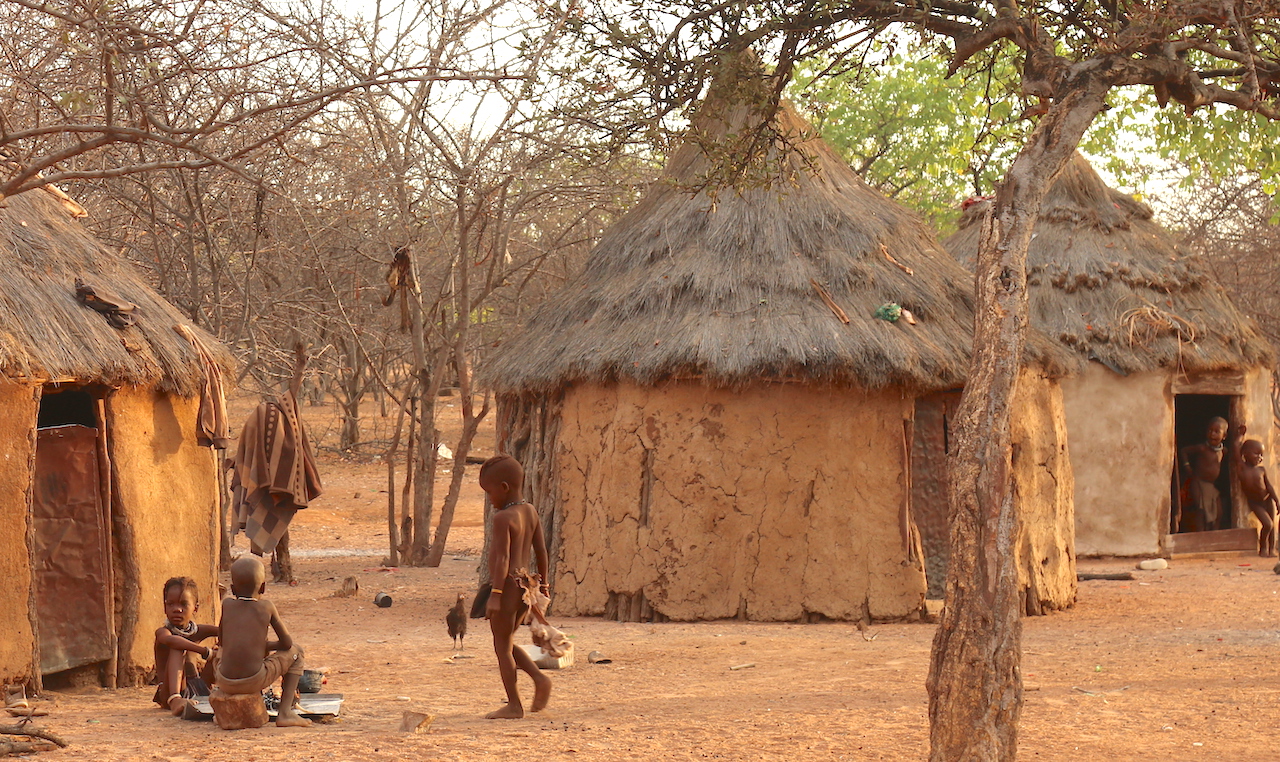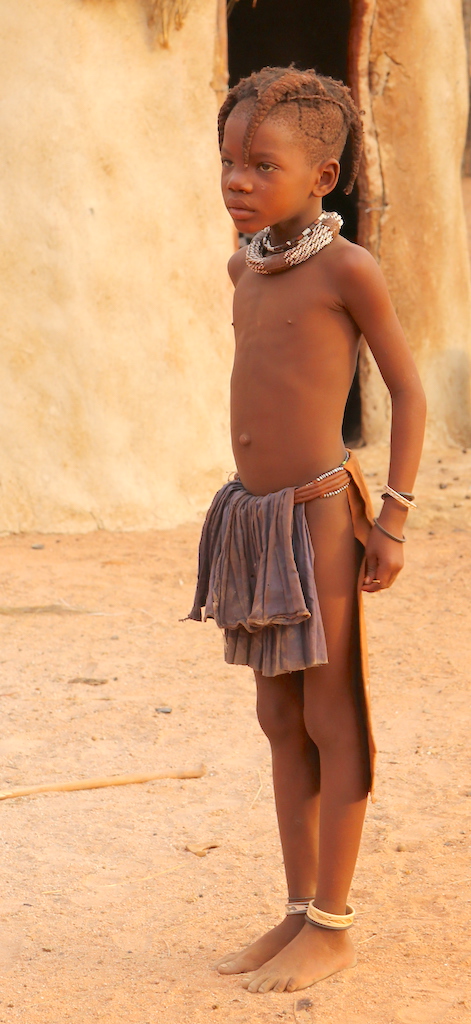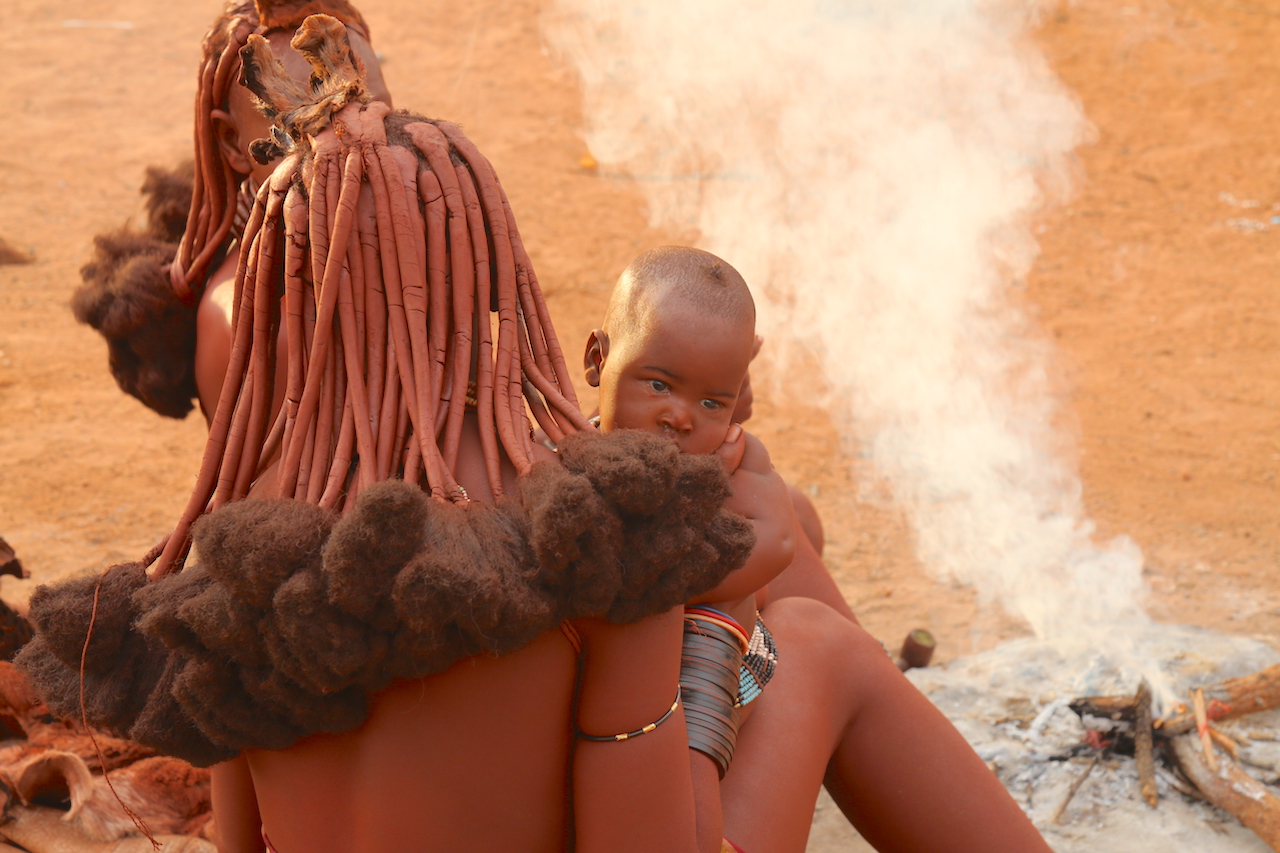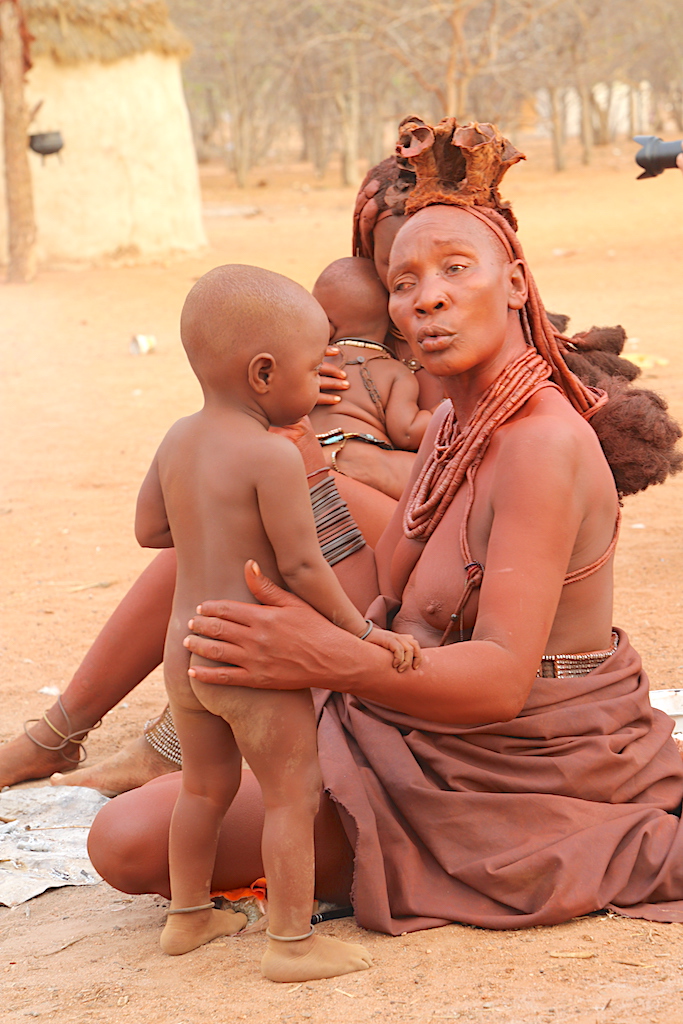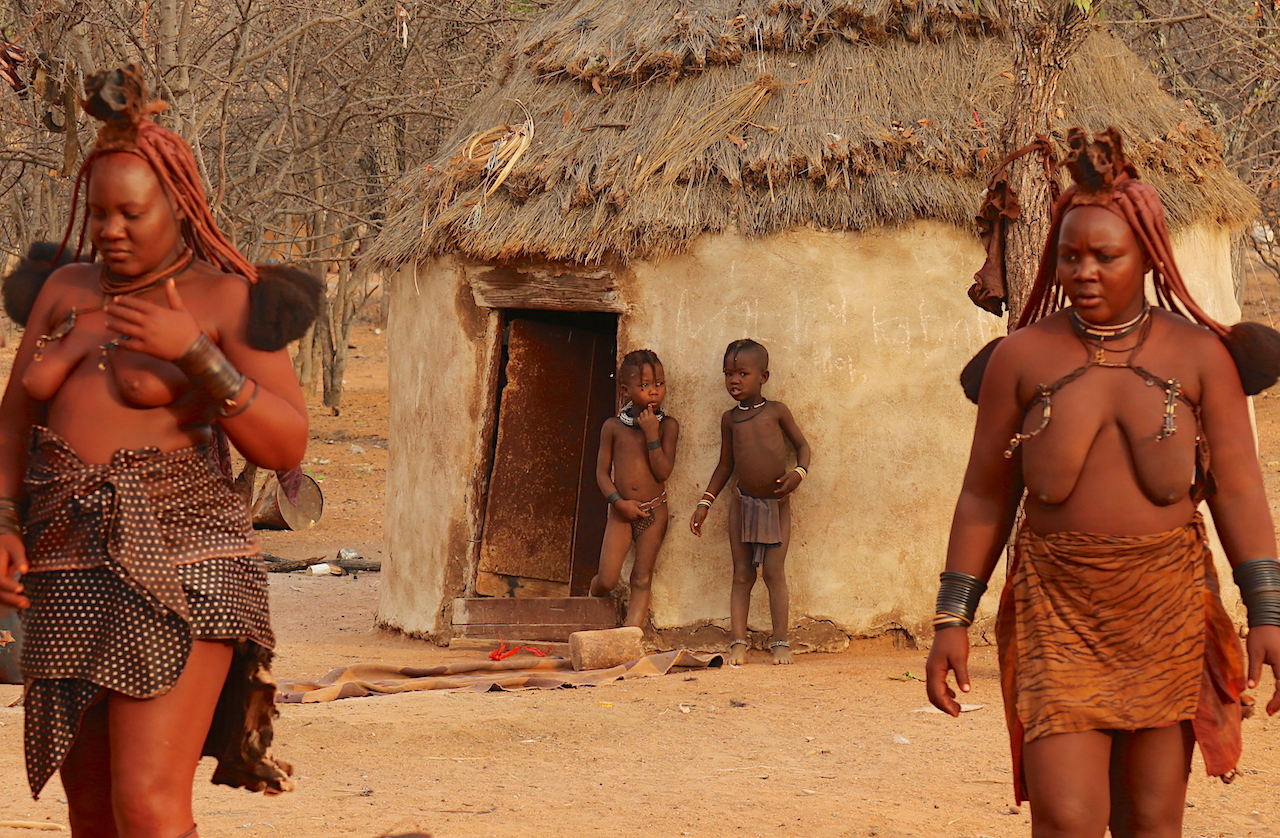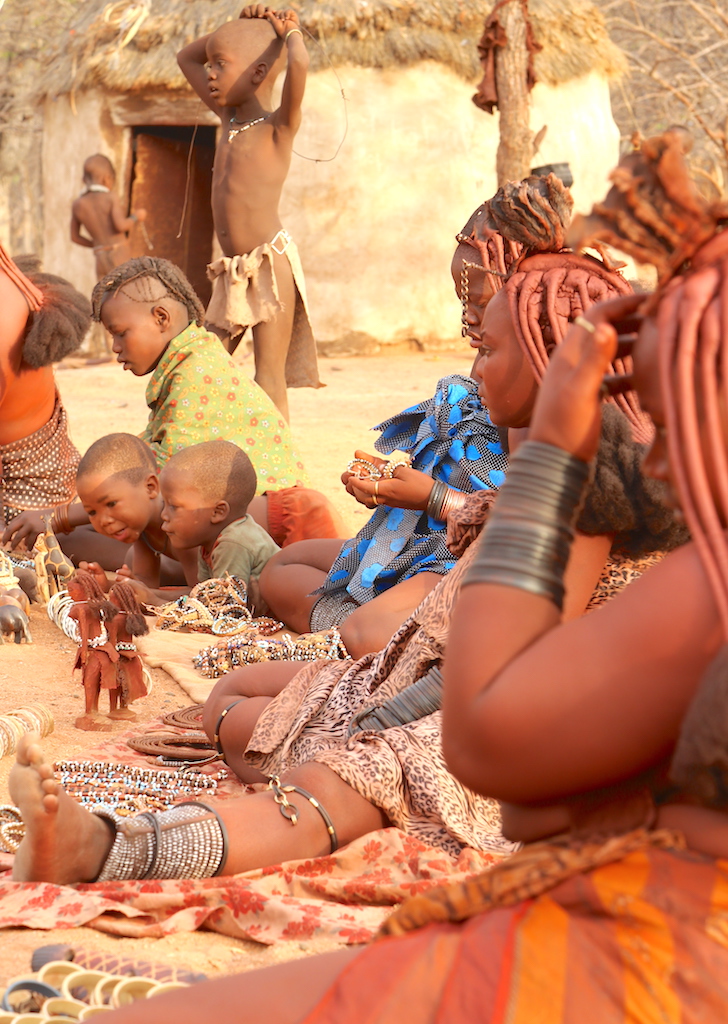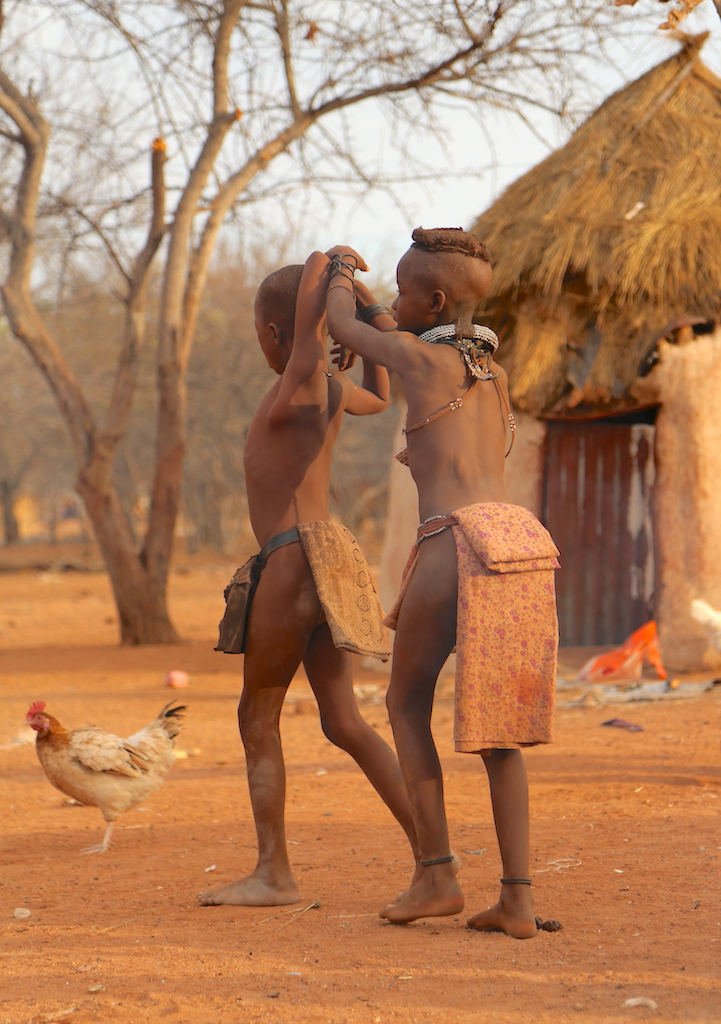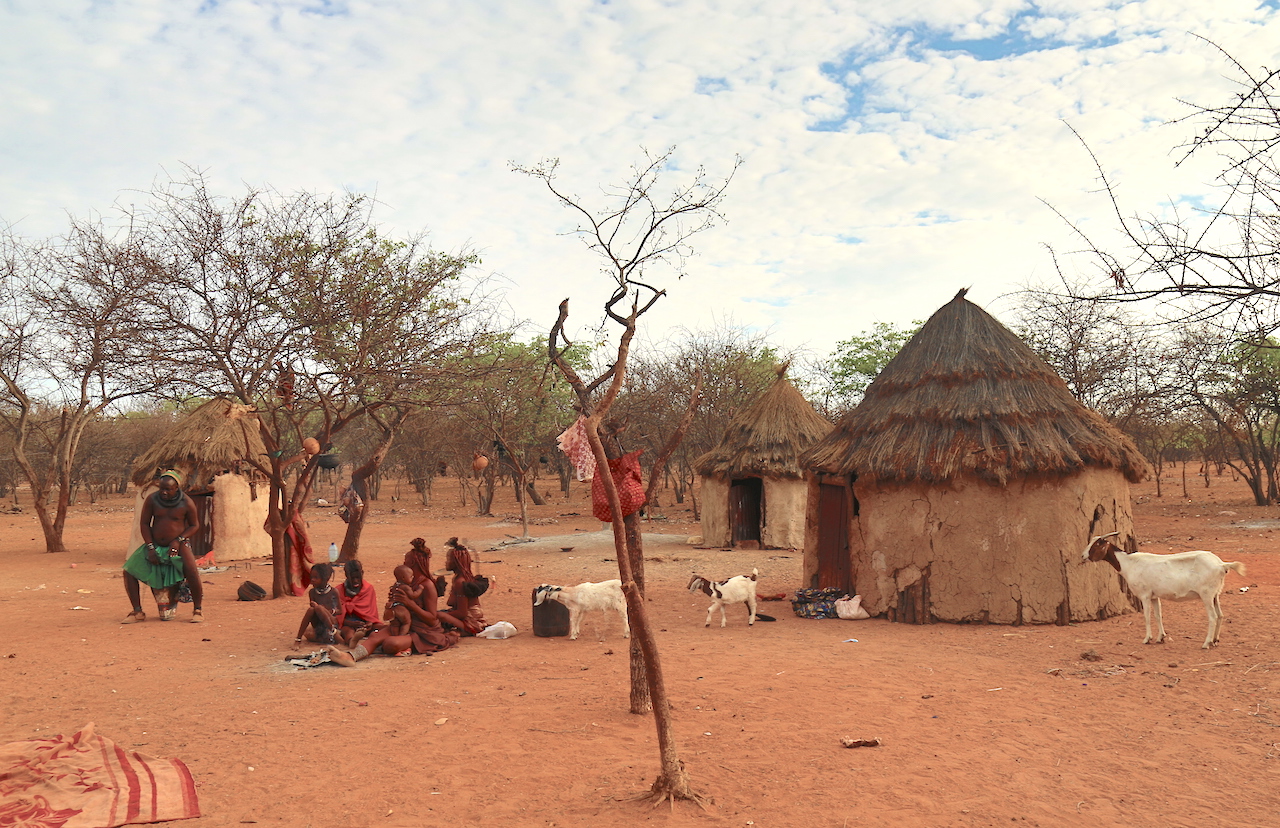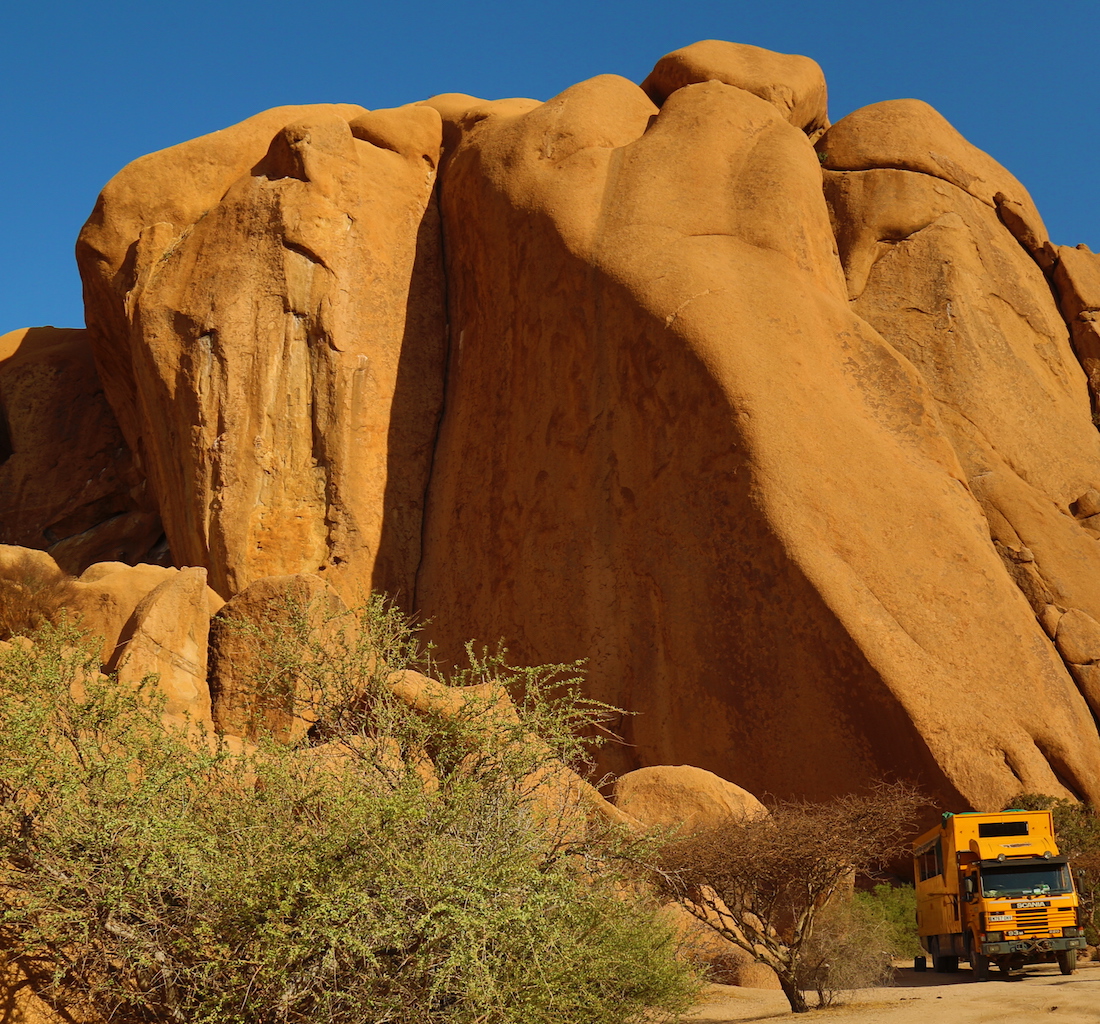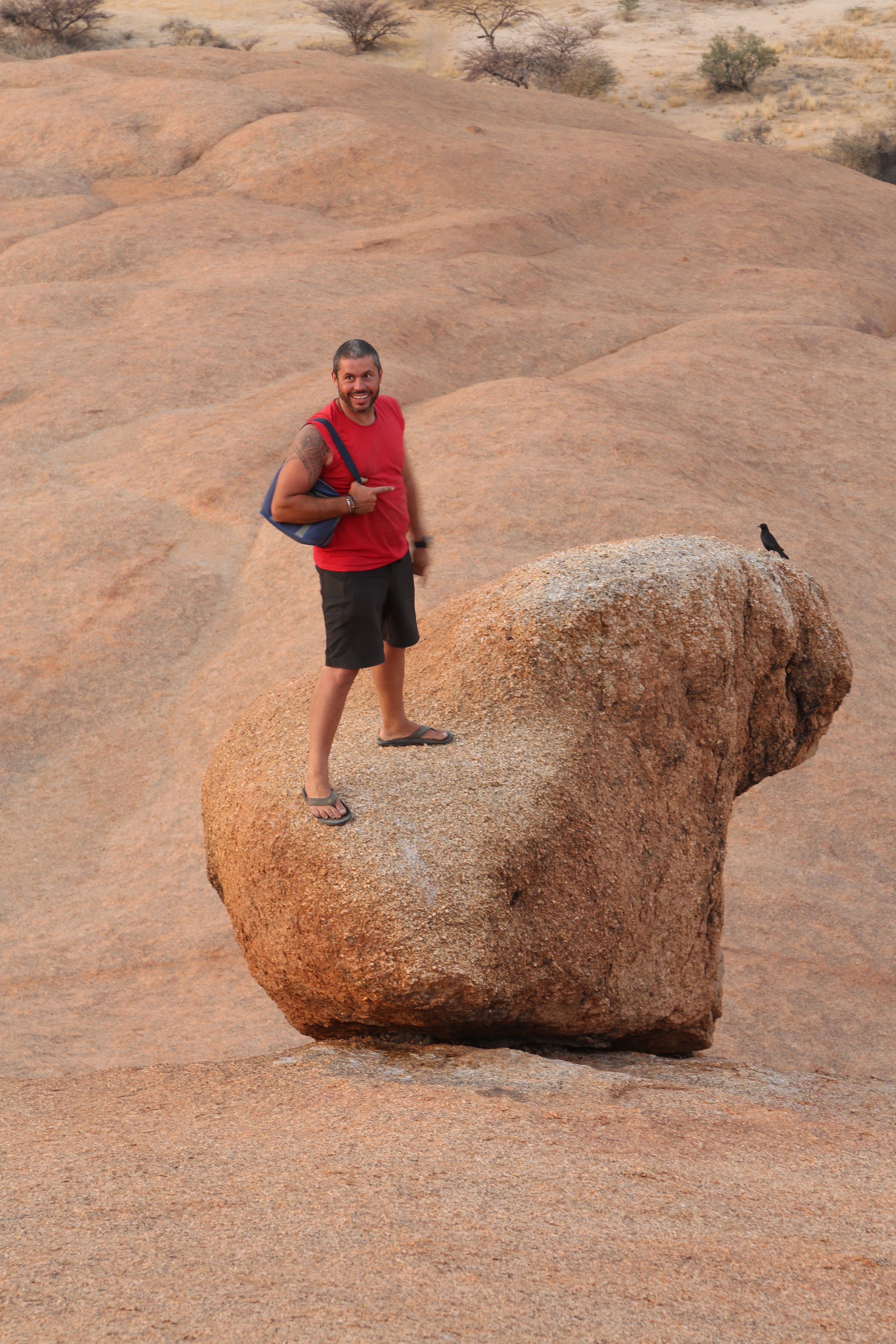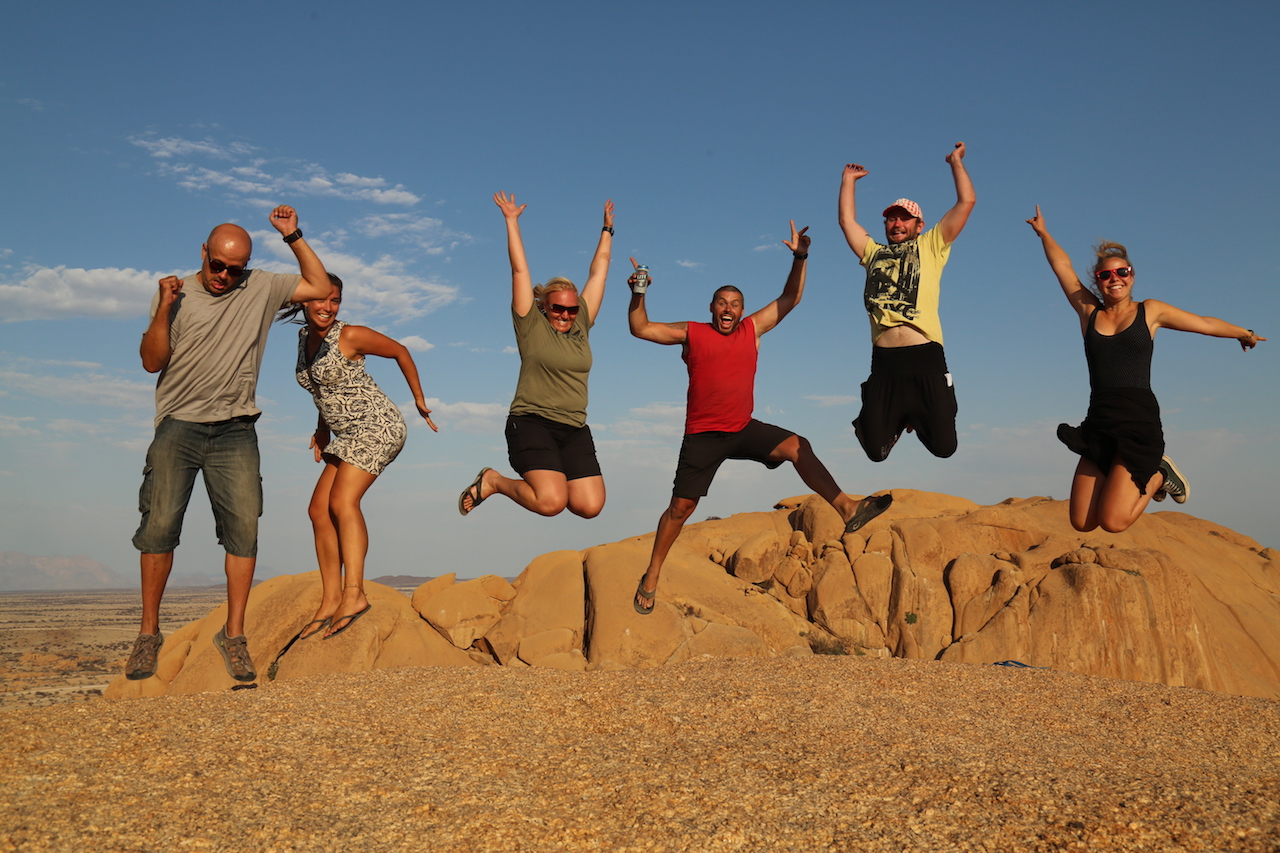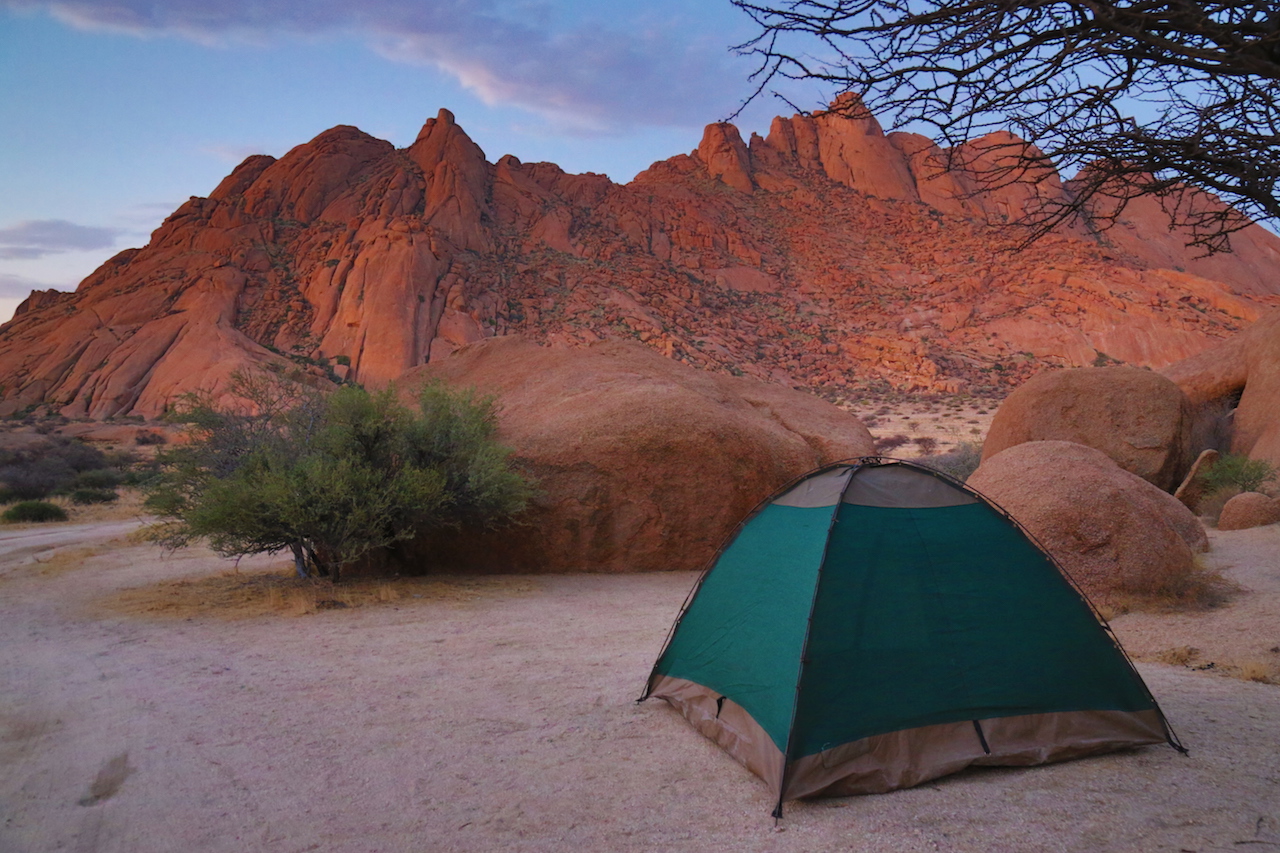Day 65 - Spitzkoppe Bush Camp
Departure was at first light, we had another long day ahead with our first stop at a Himba village.
The Himba are indigenous people with an estimated population of about 50 000 people. They are predominantly livestock farmers and count their wealth in the number of their cattle.
The Himba are especially famous for covering themselves with with otijze paste, a cosmetic mixture of butterfat and ochre pigment, to cleanse the skin over long periods due to water scarcity and to protect themselves from the extremely hot and dry climate. Hairstyle and jewelry play a significant roll, it indicates age and social status within their community. An infant or child will generally keep their head shaved with a small crop of hair on their head crown, this is sculptured to one braided hair plait. Young boys and girls have two braids extended forward towards the face. From pubescence, boys continue to have one braided hair plait, girls will have many otjize textured hair plaits, some arranged to veil the girl's face, in daily practice the hair plaits are often tied together and held parted back from the face. Women who have been married for about a year, or have had a child, wear an ornate headpiece called the Erembe, sculptured from sheepskin, with many streams of braided hair, coloured and put in shape with otjize paste. Unmarried young men continue to wear one braided hair plait extended to the rear of the head, while married men wear a cap or head-wrap and un-braided hair beneath. Widowed men will remove their cap or head-wrap and expose un-braided hair. The OvaHimba are also accustomed to use wood ash for hair cleansing due to water scarcity.
Women and girls tend to perform more labor intensive work than the men and boys do. The woman carry the water to the village, they collect the fire wood, plaster the mopane wood homes with traditional mixture of red clay and cow manure, cook and serve meals and make handcrafted jewelry and clothing. They are also responsible for milking the cows and goats, and taking care of the children. The Men's main task is tending to the livestock, animal slaughtering, construction and holding council with the village tribal chiefs.
After the interesting and educational trip to the Himba village we had pancakes for breakfast and continued west towards the Atlantic, the heat rose quickly and hit 40 degrees before 1000. We stopped for lunch under a lonely tree for lunch and had a couple of local kids watch us no doubt wandering what we were up to.
We carried on and made good time getting to Spitzkoppe late afternoon. We started exploring this amazing ark with its incredible rock formations jutting out of the arid landscape. We climbed a large outcrop and sat with a few of the crew taking in the sunset and surrounding vista.
We were then treated to our first Braai (BBQ) which included Gazelle Boerewors, Zebra, Kudu & Oryx meat. With our bellies full from a great meal we crawled of to bed watching the moon rise over the rock escarpment.
